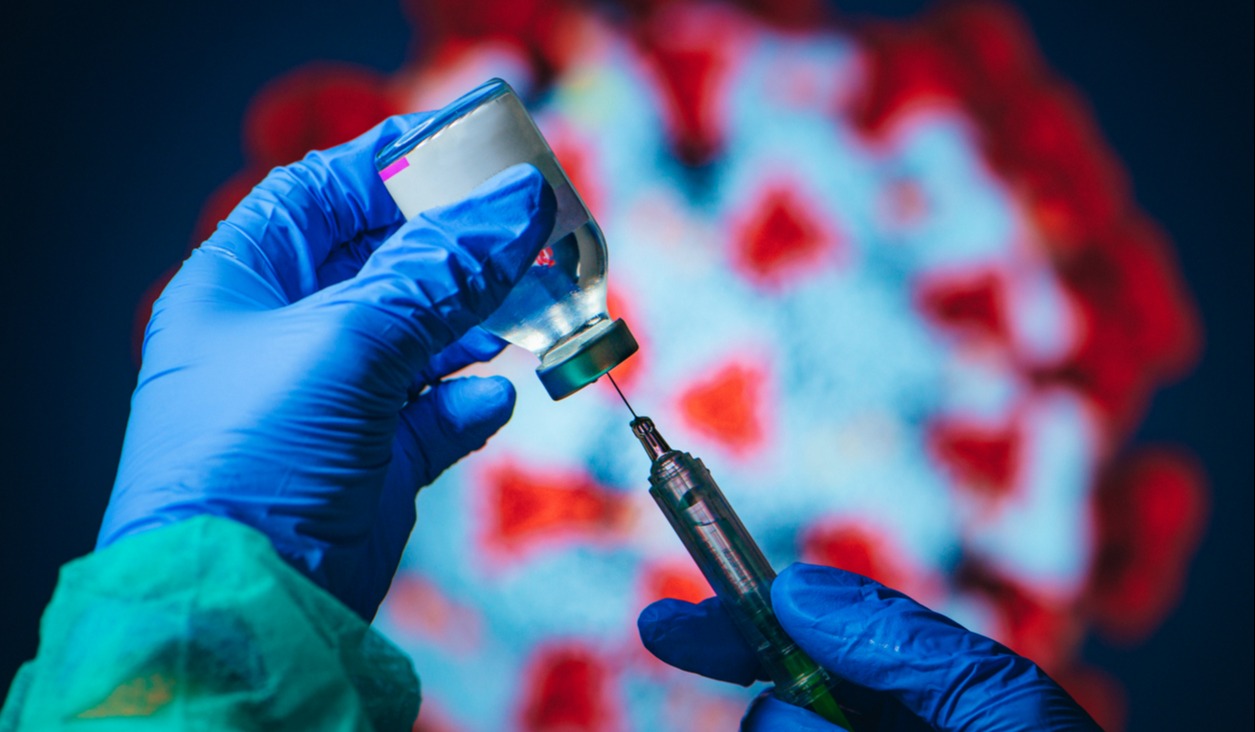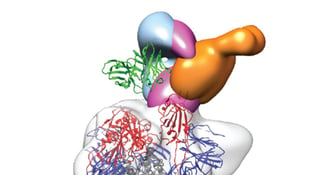Share this
quantifying Covid-19 antibodies in blood & saliva using SIMOA
by James Rudge, PhD, Technical Director, Trajan on Aug 22, 2022 9:00:00 AM
An article by Joseph M. Johnson et al at Quanterix Corporation and Emory University School of Medicine in the United States published in January 2022 on the medRxiv website described the use of SIMOA, a high-sensitivity immunoassay, to measure the impact of Covid vaccination. The paper is entitled “Quantifying post-vaccination protective anti-SARS-CoV-2 IgG antibodies in blood and saliva with a fully automated, high throughput digital immunoassay.”
The researchers collected capillary blood and saliva samples over a 6-month period, which enabled them to see differences in the speed of immune response between two cohorts. The researchers used a finger-stick method and Mitra® devices with VAMS® technology to collect the capillary blood samples, and an oral spitting tube method to collect the saliva samples.
The researchers stated that their work established a potential pathway for non-invasive, broadly accessible sample collection suitable for high-throughput quantitative serological testing “to aid in defining SARS-CoV-2 immunity at population scale.”
Covid-19: Still a Global Health Emergency
 The world presently faces a number of challenges, including concerns about the ongoing Covid-19 Pandemic, climate change, global conflict and rising fuel and commodity costs. Moreover, we are seeing the emergence of novel diseases like monkeypox, which was declared a public health emergency in July 2022 by the World Health Organization (WHO).
The world presently faces a number of challenges, including concerns about the ongoing Covid-19 Pandemic, climate change, global conflict and rising fuel and commodity costs. Moreover, we are seeing the emergence of novel diseases like monkeypox, which was declared a public health emergency in July 2022 by the World Health Organization (WHO).
These pressures are added to the harsh reality that Covid-19 has not disappeared. Although some people are already referring to “post-pandemic” stress, the United Kingdom statistics for July 2022 reveal that the pandemic persists. During that month alone, there were around 900 Covid-related deaths per week in the UK, and 1 in 36 Britons were reporting long-term Covid symptoms.
The worldwide Covid vaccine program has been effective in controlling the disease in areas where vaccines were accessible. As of July 2022, 67.2% of the world population had received at least 1 vaccine dose, with 12.41 billion doses given. However, in that same timeframe only 20.2% of people in low-income countries have received 1 dose or more.
It is important to continue to monitor vaccine efficacy in both low- and high-income countries to understand how much protection is provided by one dose, two doses, or booster shots of these vaccines. The study summarized here was aimed at creating tools to effectively monitor populations and to understand vaccine performance in Covid-naïve and Covid-recovered (Covid-experienced) individuals.
The Importance of Measuring Neutralizing Antibodies (NAb)
One key metric for measuring vaccine efficacy is to quantify neutralizing antibodies (NAbs) that have been raised as a result of infection or vaccination. It is also important to determine their half-life durations over time. However, not all antibodies function to directly neutralize a foreign invader like SARS-CoV-2.
For example, some antibodies act as flags to assist other components of the immune system to help fight an infection. Neutralizing antibodies, on the other hand, are a subset of antibodies that bind to viruses in a way that blocks infection.
 Traditional methods for measuring neutralizing antibodies involve a test such as the Plaque Reduction Neutralization Test (PRNT). However, this test is time-consuming and requires containment level-3 facilities that are equipped for handling live viruses.
Traditional methods for measuring neutralizing antibodies involve a test such as the Plaque Reduction Neutralization Test (PRNT). However, this test is time-consuming and requires containment level-3 facilities that are equipped for handling live viruses.
In this study, Joseph M. Johnson et al used a high-sensitivity multiplex immunoassay based on single molecule array immunoassay (SIMOA) to evaluate the following parameters:
- To establish a possible correlation between NAb and total IgG as an easier alternative to neutralization tests.
- Raised antibody responses and duration comparing 3 different vaccines and Covid-naïve and Covid-recovered individuals.
- Correlating saliva vs dried blood antibody levels to allow for more tools in monitoring populations.
SIMOA Study Findings
- Fifteen donors (Cohort 1) were recruited to collect saliva and matched dried blood samples collected remotely using Mitra devices with VAMS. Specimen samples were collected pre- and post-vaccination and monitored over 6 months (n = 21 timepoints) with rapid sampling at the initial time points. Cohort 1 was vaccinated twice during this period.
A second cohort of 24 donors (cohort 2) were monitored via VAMS blood sampling only, over 6 months and over 6 sampling events with 1 vaccination event. - High-frequency sampling from cohort 1, post vaccination (mRNA), showed 100% seroconversion over 1 week in Covid-experienced recipients, and two weeks seroconversion for the Covid-naive cohort.
- At maximum IgG titres, 6-fold increase in median anti-spoke IgG levels was observed for Covid-experienced participants compared to Covid-naïve participants. This observation matched a previous published study.
- After a second dose of mRNA vaccine, there was a 10-fold increase in IgG titre for the Covid-naïve cohort but no change for the Covid-experienced. This added weight to previous studies that hypothesized that a second dose of mRNA vaccine may not be necessary for the Covid-experienced cohort.
- Their results demonstrated (as published in another paper), a good correlation between NAb levels and total IgG for the full spike protein.
- A significant nonlinear decay in IgG was seen after vaccination over 6 months as well as a corresponding loss of neutralizing antibodies. ACE-2 binding inhibition was down 7.8% after 6 months, compared to 93% at the beginning of the study. This observed decay also was in alignment with literature values, although others had reported a more linear delay. This may have been due to the fact that the SIMOA assay measures full spike, while the literature referenced anti-RBD only assay.
- The group commented that because mRNA vaccines produce NAbs to the full spike protein and not just RBD, this SIMOA assay may more closely reflect a non-linear NAb decay profile compared to an anti-RBD only assay.
- Based on their data, if 50% blocking of the virus occurs at 15.7 µL/mL, then it is possible to predict decay time to 50% inhibition, related to the peak IgG levels. For example, a duration of 86 days would be seen for 150 µg/ml but only 16 days if the peak levels were 30 µg/ml.
- Salivary IgG levels were compared to dried whole blood VAMS samples. Anti S-protein IgG is 3-4 logs lower to the capillary blood levels. This is too low for many other immunoassays including many ELISAs. However, due to the high sensitivity of the SIMOA assay, the group were about to measure salivary IgG and the IgG induction dynamics aligned well with capillary blood (Rm = 0.80).
Study Authors’ Conclusions
- Vaccination at a specific threshold helps to create a herd immunity, which helps to protect susceptible individuals who can’t be vaccinated.
- Understanding immunity at a population level is a requirement to understand how well protected the specific population is, and how vaccination programs can then be tailored to specific population needs.
- A non-invasive salivary method can be developed that does not require a specialized saliva collection device.
- It is possible to quantify protective IgG antibodies in Mitra-VAMS devices as an alternative to risky antibody neutralization studies.
Neoteryx Comments
It was reported in July 2022 by the office for notational statistics (ONS, UK) that the risk of Covid-19 infection when Omicron variants were dominant (December 2021 to July 2022) compared to when the Delta variant was dominant (May to December 2021) was 5 times more likely.
Moreover, a July 2022 news report suggested that Omicron BA.5 cases, even when vaccinated with a booster, had 3.4 times higher odds of hospitalization compared to corresponding BA.2 cases. This suggested higher immune evasion for BA.5 lineage.
These recent findings further illustrate the importance of continuing to screen populations for immunity and vaccine efficacy. Being able to achieve this by using remote devices such as Mitra with VAMS, for both standard and specialized immunoassay, is a proven technology that enables population monitoring without the need to visit phlebotomists. The results of this study also showed the utility of salivary sampling when SIMOA is used.
This article was summarized for our readers by James Rudge, PhD, Neoteryx Technical Director. This is curated content. To learn more about the important research outlined in this blog, visit the original article on the medRXiv website.
Image Credits: iStock, Neoteryx, Trajan Scientific and Medical
Access this microsampling article and others in our Technical Resource Library.
Share this
- Microsampling (206)
- Research, Remote Research (119)
- Venipuncture Alternative (105)
- Clinical Trials, Clinical Research (83)
- Mitra® Device (73)
- Therapeutic Drug Monitoring, TDM (51)
- Dried Blood Spot, DBS (39)
- Biomonitoring, Health, Wellness (30)
- Infectious Disease, Vaccines, COVID-19 (24)
- Blood Microsampling, Serology (23)
- Omics, Multi-Omics (21)
- Decentralized Clinical Trial (DCT) (20)
- Specimen Collection (18)
- Toxicology, Doping, Drug/Alcohol Monitoring, PEth (17)
- Skin Microsampling, Microbiopsy (14)
- hemaPEN® Device (13)
- Preclinical Research, Animal Studies (12)
- Pharmaceuticals, Drug Development (9)
- Harpera Device (7)
- Industry News, Microsampling News (5)
- Antibodies, MAbs (3)
- Company Press Release, Product Press Release (3)
- Environmental Toxins, Exposures (1)
- July 2025 (1)
- May 2025 (1)
- April 2025 (2)
- December 2024 (2)
- November 2024 (1)
- October 2024 (3)
- September 2024 (1)
- June 2024 (1)
- May 2024 (1)
- April 2024 (4)
- March 2024 (1)
- February 2024 (2)
- January 2024 (4)
- December 2023 (3)
- November 2023 (3)
- October 2023 (3)
- September 2023 (3)
- July 2023 (3)
- June 2023 (2)
- April 2023 (2)
- March 2023 (2)
- February 2023 (2)
- January 2023 (3)
- December 2022 (2)
- November 2022 (3)
- October 2022 (4)
- September 2022 (3)
- August 2022 (5)
- July 2022 (2)
- June 2022 (2)
- May 2022 (4)
- April 2022 (3)
- March 2022 (3)
- February 2022 (4)
- January 2022 (5)
- December 2021 (3)
- November 2021 (5)
- October 2021 (3)
- September 2021 (3)
- August 2021 (4)
- July 2021 (4)
- June 2021 (4)
- May 2021 (4)
- April 2021 (3)
- March 2021 (5)
- February 2021 (4)
- January 2021 (4)
- December 2020 (3)
- November 2020 (5)
- October 2020 (4)
- September 2020 (3)
- August 2020 (3)
- July 2020 (6)
- June 2020 (4)
- May 2020 (4)
- April 2020 (3)
- March 2020 (6)
- February 2020 (3)
- January 2020 (4)
- December 2019 (5)
- November 2019 (4)
- October 2019 (2)
- September 2019 (4)
- August 2019 (4)
- July 2019 (3)
- June 2019 (7)
- May 2019 (6)
- April 2019 (5)
- March 2019 (6)
- February 2019 (5)
- January 2019 (8)
- December 2018 (3)
- November 2018 (4)
- October 2018 (7)
- September 2018 (6)
- August 2018 (5)
- July 2018 (8)
- June 2018 (6)
- May 2018 (5)
- April 2018 (6)
- March 2018 (4)
- February 2018 (6)
- January 2018 (4)
- December 2017 (2)
- November 2017 (3)
- October 2017 (2)
- September 2017 (4)
- August 2017 (2)
- July 2017 (4)
- June 2017 (5)
- May 2017 (6)
- April 2017 (6)
- March 2017 (5)
- February 2017 (4)
- January 2017 (1)
- July 2016 (3)
- May 2016 (1)
- April 2016 (2)



No Comments Yet
Let us know what you think